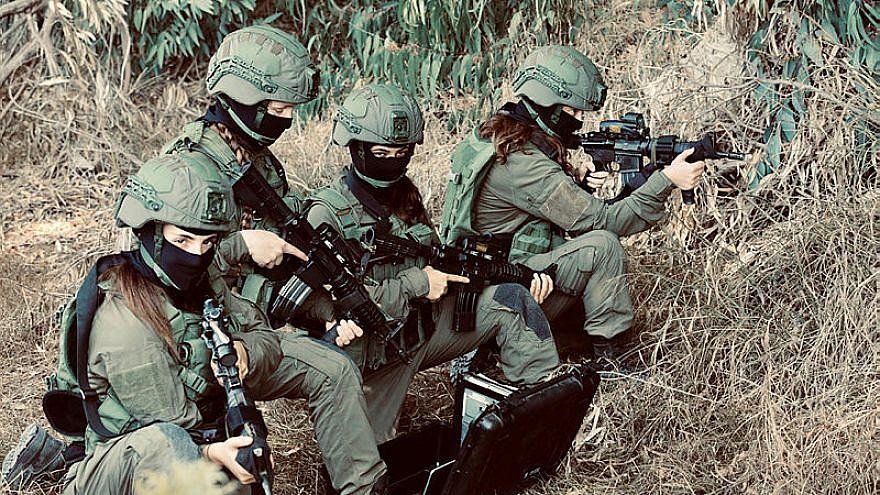Some four years ago, in typical secrecy, the Israel Defense Forces’ infamous Unit 8200 established its first company of female warriors. The company operates within the framework of 8200’s combat intelligence unit, which meshes infantry and technology to form the IDF Intelligence Directorate’s reconnaissance outfit. Unlike other combat units in the army, the soldiers in this company are first and foremost tech wizards. This is also how they are recruited: Their technological proficiency is tested first, and only then their physical acumen and fitness as combatants.
The combat intelligence unit is 8200’s forward operating arm, and it can reach places keyboard warriors can’t. The soldiers don’t just bring the technology to the front, they also operate it. Inside enemy territory, or close to it, they are tasked with accomplishing what developers and programmers cannot do from afar.
The reality, of course, is far less simple. First, you need to gather the information. Conversations on WhatsApp, for example, are encrypted. Apple software, meanwhile (unlike Android) is not open-source. Very few countries are capable of bypassing such barriers without leaving a fingerprint.
Second, you need the ability to sift through the information. In the past, the brunt of information was via signals intelligence, or SIGINT (or, in simple English, wiretaps). 8200 eavesdropped on phone calls, and the important information was kicked up the priority list. This works on a small scale, but anyone wanting to compile hundreds of millions of emails, personal messages and other sources of information per day needs super-systems capable of storing and automatically analyzing the data.
Third, and most importantly, the enemy is also learning. Whether in terms of collecting information in the cyber sphere — an area in which Iran is particularly active, but also where Hamas is showing surprising and methodical advancement — and in terms of defending against Israeli activity, through upgraded systems and tighter security measures. Most terrorist elements (in Gaza, Judea and Samaria and Lebanon) have understood that Israel is a technological superpower, and long ago transitioned to communicating via alternative means. They don’t allow cell phones in meetings, knowing their microphones or cameras can be remotely activated, avoid sending electronic messages or mail, and often use codewords.
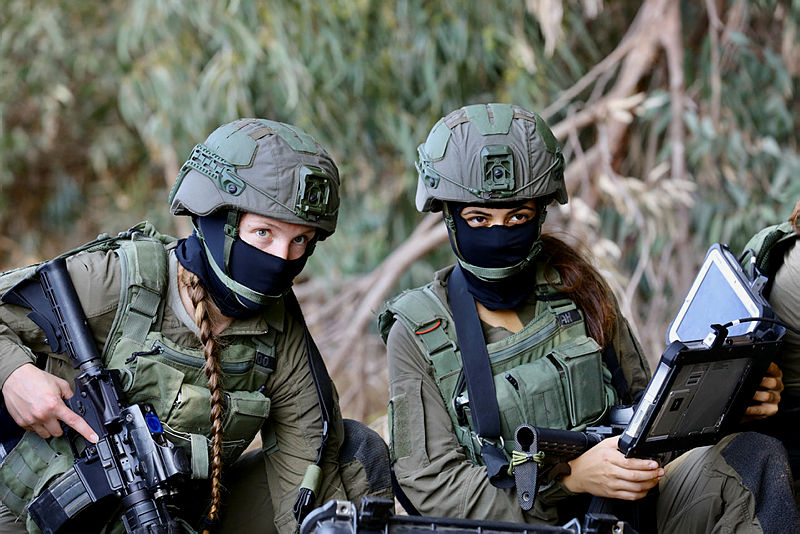
“We are more exposed than the average IDF soldier to these capabilities of our enemies,” says Lt. Col. D. “The information security component has become dramatic for them. It obligates us to protect ourselves and to safeguard our operational methods and technology, so it stays a secret, and at the same time find breaches on the other side and exploit them.”
All of these defenses are very difficult, and sometimes impossible, to bypass remotely; hence the need to make physical contact with the enemy. On his home turf, in his home and sometimes even up close and personal. The unit does its work in the field—this can be a sleepy Palestinian village in the dead of night, but also enemy territory. The unit’s soldiers operate across all arenas, in all environments. Consequently, a great deal of planning and study is required before each mission, to adapt the operational methods to the conditions on the ground.
Sometimes the mission is to install a device, other times to remove a device, and occasionally it’s decrypting something in the field to collect data in real-time. Each mission requires a different operational solution, which is sometimes tailor-made for the unit and on a one-time basis. There is no such thing as a defined operational protocol because no two missions are the same. The soldiers must adapt themselves to each mission—a far cry from the concept employed by many IDF units.
The unit’s advantage is its parent unit, 8200, which is divided into departments, each with a specialized focus, mostly pertaining to the cyber sphere. The combat intelligence unit works closely with all these departments on a daily basis, which allows it to find the solutions it needs to its various problems.
It is essentially a boutique unit which performs missions and provides solutions that other units or tools cannot. The more the enemy improves and advances technologically, the greater the demand for these solutions.
“Our fighters need to know these technologies very thoroughly because they are often required to make decisions or provide solutions in the field,” said Lt. Col. D.
In many cases, what isn’t done in real time will never be done, because the enemy will have destroyed evidence or disappeared. Even if not, it’s doubtful the IDF will go to the same place twice. Therefore, the here-and-now aspect of the mission is critical.
Identify, sort, verify
8200’s combat unit was established several decades ago as a reserve battalion, becoming part of the regular army in 2011. Today, too, its reservists serve in a combat capacity and participate in quite a few operations. Over the years the unit has undergone changes and adaptations, based on the changing environment and technology. The soldiers, including now female ones as well, operate at any time of day or night, in any terrain.
Although the unit belongs to 8200, it works in conjunction with all of Israel’s security and intelligence agencies. In other words, any client of the mother unit, 8200, is also a client of its combat unit.
In recent years, 8200 has found it increasingly difficult to recruit new soldiers to its combat unit. Although it is first in the recruitment line ahead of all other units in the IDF (except for the pilot’s course), it isn’t easy finding boys with the requisite technological aptitude who also want to serve in a combat capacity in the unit. Those who choose to be fighters prefer to join special forces or combat battalions, and those who opt to serve in a technological capacity, despite meeting the physical criteria for a combat profile, would rather sit in an office writing code.
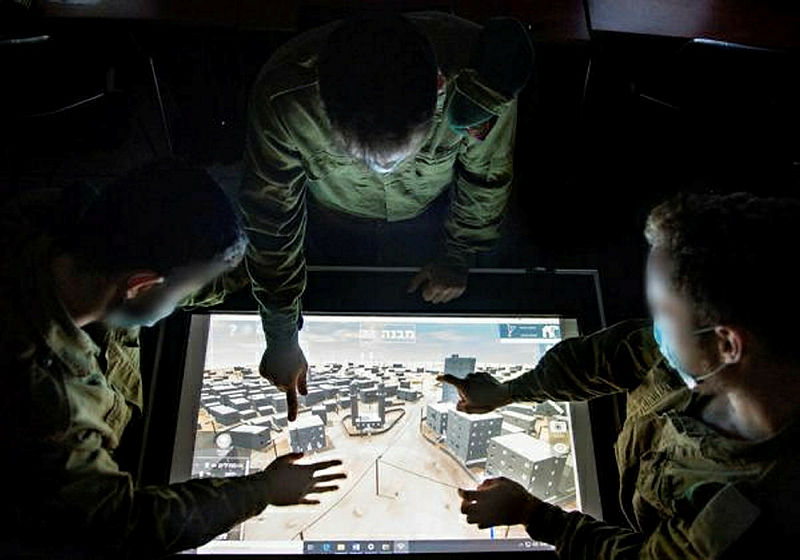
To contend with this challenge, the unit has devised several solutions. The first is exposure. While secrecy is good for business, it’s bad for recruitment. The youngsters, as stated, choose units they’re familiar with and have heard about. Sayeret Matkal, the IDF’s top special forces unit, and Shaldag (“Kingfisher”), the Israeli Air Force commando unit, are secretive, but over the years have been the focus of countless reports, books and movies, and their operational legacy is robust and attractive to young men in search of action.
8200’s combat unit is young and anonymous. To overcome this hurdle, the decision was made eight years ago to reveal its existence. At the time there were no female fighters in the unit, which was created as a result of the lessons learned from the Second Intifada and operations in Gaza, and the need to surmount the obstacles Israel’s enemies pose to the IDF in general and to 8200 in particular.
The increasing need for high-caliber manpower led to the second decision, made in 2017, to recruit women into the unit. This path was paved, first and foremost, by the success of women in other combat units in the IDF: Around 50 percent of the army’s air-defense controllers and the Home Front Command’s search and rescue battalions (which perform the brunt of routine operations in Judea and Samaria) are women, and this is also the case in the mixed-gender battalions that defend the borders—Caracal, Lions of the Jordan and Bardelas.
This success led to more and more women seeking service in a combat capacity. Today, the demand among female recruits for positions in the field is extremely high. The most sought after position, as usual, is instructor—but combat positions aren’t lagging far behind. Some of the women who possess the requisite technical skills lack the physical profile for combat duty, or the motivation (unlike men, Israeli women must ask to serve in a combat role), and some would rather serve in more prominent units and capacities.
This amplifies the challenge facing the unit even more: Find the women with talent, sort through them, make sure they want to be combat soldiers and then put them through a doubly arduous training process: technological and combat. Only several dozen women have completed this training since the unit opened its doors to women.
‘Mature decision makers’
Even if you look closely, you won’t find the role of “8200 combat intelligence” on the list of available positions for women in the army’s brochures. Nor will you find it on the Meitav website, which provides information to young men and women prior to enlistment.
Female recruits with the potential to serve in the unit are tapped due to their high “Quality Group” score (which summarizes the results from personal interviews and computer-generated psycho-technical test results) and tend to be graduates of science-oriented tracks in high school. Some of them reach the unit after being dropped from other prestigious courses, such as pilot’s course and the naval academy course.
This is also why the Military Intelligence Directorate chose to participate in this article: To let female recruits know about the unit and encourage them to join its ranks—and if they are contacted, not to reject it outright.
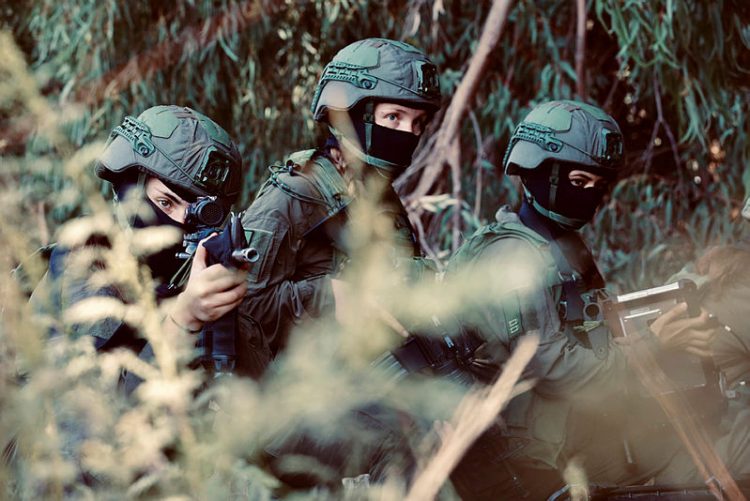
“I view this article as a great opportunity,” said Lt. Col. D. “Not that we have demand problems, but an article like this can open the minds of many women who interview for the Military Intelligence Directorate, even those who never considered combat service and want to reach 8200.”
“Technological warriors,” he calls them. From his perspective, “the combat aspect is the DNA of the role. Initially, their integration was a challenge, but it very quickly got on track. Their motivation to prove themselves is enormous. They are pioneers. And they have many advantages compared to men, which produces impressive operational results.”
Women fighters at this age, he explained, “are more mature decision-makers than their male counterparts. In our line of work, maturity and sound judgment are important, because the price of a mistake is dramatic.”
Although the female company works separately from the male one, the unit makes sure each mission is assigned to the soldiers most suited to it skills-wise. Hence the women must be prepared for any type of mission on any front. Both companies, male and female, work simultaneously, and when the need arises go on joint missions. That said, women represent just 15 percent of all the soldiers in the unit.
One criterion for selecting a soldier for a given mission is physical. For missions involving very long marches with heavy equipment, for example, male soldiers will almost always be selected. Conversely, women are better suited for other missions.
The degree of danger, they say in the unit, is not a factor. It is, after all, a combat unit that operates behind enemy lines.
“On the modern battlefield, you need more than a grenade or a rifle,” said Lt. Col. D. “It used to be infantry against infantry or tanks against tanks. Today, the technology comes with tremendous advantages. The female warriors will be part of any battle plan in a future war. Our only consideration will be professional, not based on gender.”
In most cases, missions assigned to female soldiers require a prolonged preparation period. Only a handful of missions are spur of the moment. This is because these missions are usually technologically complex and require meticulous planning.
What normally happens is the female warriors receive an operational objective, after which they dismantle the problem and begin the process of intensive study. They then devise a specific and unique solution, based on the unit’s comprehensive operational and technological toolbox. These preparations can last for months and on some occasions entail mock-ups of the target.
The soldiers of 8200 are actively involved in the planning process.
“In the IDF, the person who developed the Merkava tank is not the person teaching others how to shoot with it,” said a senior unit officer. “Here, that’s not the case. The person who developed the most advanced technology in the world also teaches us and is also involved in the process during the operation, because every intelligence-related question has a technological answer that needs developing.”
“8200 comes with a problem, and we come with a solution to that problem,” said Capt. A, the commander of the unit’s female company. “Every mission is different than the one before it—the chances of doing a mission we’ve already done is close to zero. This means every soldier must stretch herself to her limits and beyond, and open a train of thought for something that is infinite. We are the operational arm of 8200. That’s nothing less than the best.”
Lt. Col. D added: “Our mission diversity is immense. I don’t think there’s another unit in the army with such a broad operational spectrum.”
‘I quickly got stuck in a loop’
The female company is situated in the center of the base, near the male company. A warning sign on the border between the two areas says: “Men out of bounds, by order!” This is where they train, separate from the men, it’s where they get ready for their missions, and it is from here that they embark on lengthy operations.
An open door reveals meticulously organized quarters, sheets folded neatly on bunk beds. A small, outdoor communal area with four wood benches also serves a mess hall for team meals. A colorful hammock hangs between two large eucalyptus trees, ready for those few moments of rest and relaxation. In another corner of their area is a weightlifting machine.
The exposure doesn’t come easy or naturally to them.
“There are operations I’ve discussed less than this entire article,” said a senior officer as we entered the classroom.
The walls are white and blank. The whiteboard has been erased and cleaned and now shines as if never used. We are asked to leave our cell phones outside.
The female soldiers walk into the room, looking like solid competition for G.I. Jane. When I ask to see their training area, they chuckle: “Even when maintenance soldiers come here to fix a plumbing problem, they need to let us know in advance, so we can lock away our equipment in our lockers and make the rooms sterile.”
Although the interview was defined as an important task, by order, the women shift uneasily in their chairs. Capt. A (24) joined the unit two years ago from an elite infantry unit. She was born to parents who immigrated from Russia and grew up in Haifa, the middle child of three daughters.
“It wasn’t obvious to my dad that his daughters would enlist in the army,” she said. “Because I volunteered with Magen David Adom [emergency responders] in high school, I had planned to do a paramedics’ course and continue on to medical school.”
However, a few weeks before her enlistment, she chose a different path.
“Inspired and encouraged by my boyfriend, who was a new immigrant who enlisted for combat service, I decided to do something different, which I could never do in civilian life. I began to investigate the world of combat duty for women, and I went to the tryouts for Caracal. My father took it very hard. But once he realized what it was all about and saw the reactions, he was behind it full throttle. He told me, ‘aim high.’”
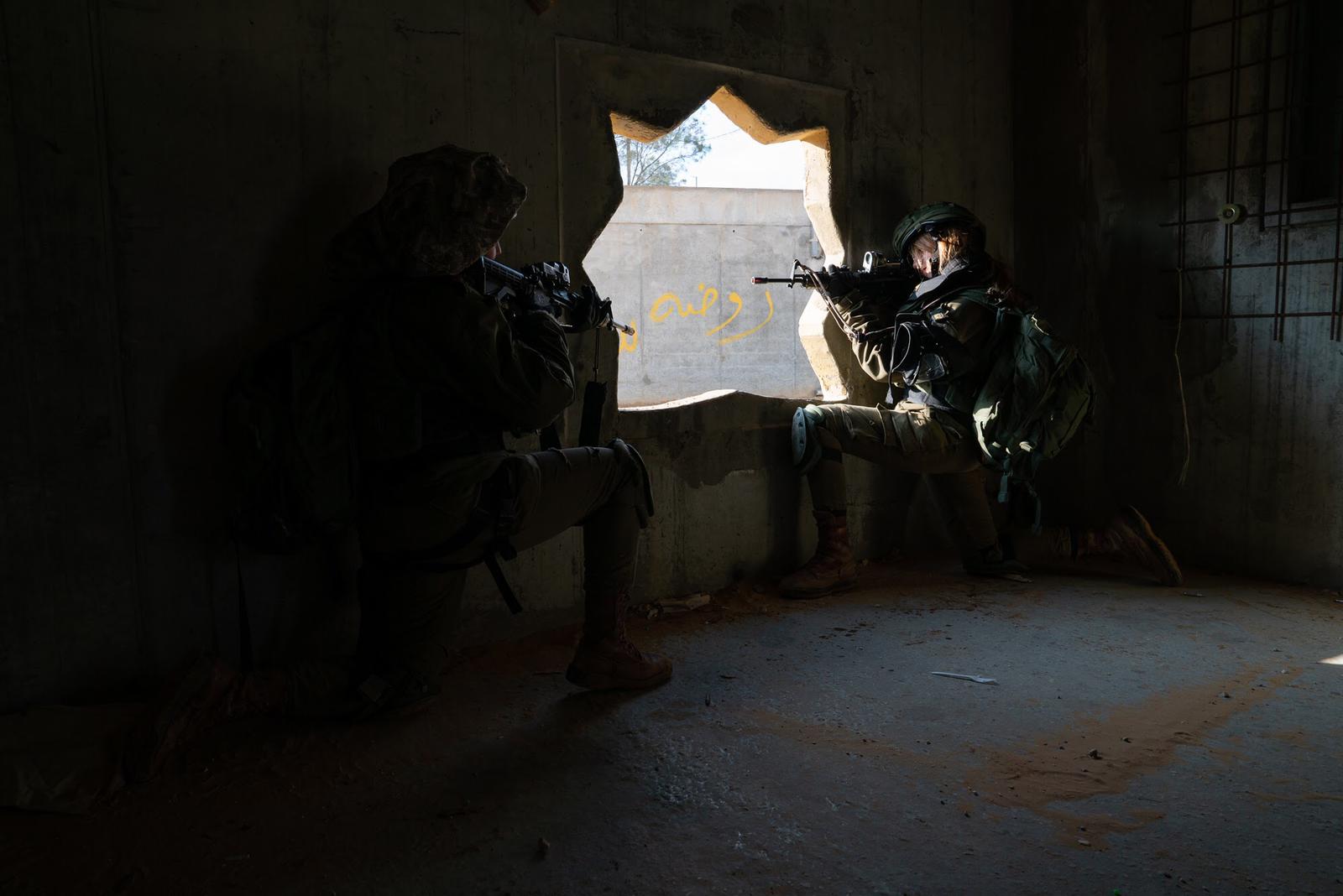
A went to officers’ training and returned as a team commander in an elite unit. She commanded three teams there. Two years ago, a moment before her discharge, her commander heard 8200 was looking for female warriors.
“He suggested that I go interview there, to explore the option. I was already thinking about my studies in civilian life, but I decided to go anyway. By the end of the interview, I had a twinkle in my eyes, I felt it was a privilege, that I could be part of something huge. I informed the army I was rescinding my discharge, signed on for two more years, and within a month I was here,” she said.
“I had two weeks of study time and got into the operational loop pretty quickly. The transition was sharp and difficult—from a unit that works in a very particular field, with a clear objective, to a place with so much work in so many sectors. During the first few days, I felt I landed on a different planet,” she added.
“I never thought of myself as a technological person and never got to the point where I needed to deal with such material. I tried approaching it with an open mind, and decided I would accept the challenge. Every time things got hard, I repeated the mantra that helped me keep my head above water throughout that whole time—that I’m shattering my own limits.
“With time, I realized how much I love it and how good I am at what I do. Every day, I try to seek out that new challenge. The knowledge that I conquered another peak, higher and steeper than the one before it, comes with tremendous satisfaction that fuels my drive to continue looking forward toward the next peak.”
Q: On your first mission, you commanded fighters who were more technologically experienced than you. What was that like?
A: I was very strict. I kept the reins in my hands, didn’t let anyone else lead. I thought I would need to keep an eye on my soldiers and watch over every little thing they were doing. And in one fell swoop I realized I was wrong, big time. I saw how high their level was, I saw the unit’s capabilities, and I was in shock. In that very moment it dawned on me that I had reached a place with a different standard of professionalism. I was filled with confidence that they know how to carry out their missions at the very highest level, and that they love what they are doing. I learned to let go and trust them, I understood that I don’t need to be tough. I changed my approach 180 degrees. When I give someone a job to do, I can rest easy knowing it will get done. Everything is taken care of.
Q: Do you go out with them into the field?
A: Most of the time, yes. It depends on the mission. I try going on missions as much as possible, to make the decisions on the ground. But sometimes it’s important to let the commanders under me lead in the field, while I’m in the command center or someplace else. I’m also tested in times of routine. Based on how I manage our routine, the unit can plan for the next mission. And the next mission can start at any time.
Q: Is there a difference between the command structure you were familiar with and your current position?
A: Here, the command is at eye level, kind of like a family. Coffee every morning, and if possible, in the evening. It’s different from what’s accepted and goes on in the other units I know. I have a very close relationship with my soldiers, I respect them and learn from them.
Her boyfriend was recently discharged and has begun his university studies.
“We’ve been together seven years; we’re very used to only seeing one another on weekends, because he was a fighter, too. When there’s an operation happening, it’s harder to be in touch, because there isn’t always a phone around or it can’t be used for two weeks. But he understands it,” she said.
She is supposed to finish her service this summer, but the unit is pressing her to stay, offering her challenging positions.
“I’m at a crossroads. Academics and civilian life are enticing to me. My partner and parents are pushing me to stay in the unit, but support any decision I make. I’m still undecided.”
‘The tool we have is the team’
None of the female soldiers in the unit knew beforehand exactly what the role entailed, not even during the long and difficult training process, which spanned more than a year. They weren’t even told where the finish line was, as a means of enforcing their mindset to be primed and ready for any scenario, at any time. They all signed and committed, like every female combat soldier in the IDF, to serving the same amount of time as their male comrades—two years and eight months, in addition to reserve duty in the future. They are all required to maintain utmost secrecy, even from family and friends, including a prohibition on discussing their job on social media or uploading photos related in any way to their military service.
2nd Lt. Y, the female company’s chief training instructor and a graduate of the unit’s trailblazing first class of female warriors, said: “Today when I look at my accomplishments as a fighter, commander and as chief training officer, I can see that the perception of the female fighters has changed in the minds of the unit’s commanders. I believe there are no doubts about our capabilities.”
Q: Before going on a mission, is there fear?
A: Always. There’s a giant responsibility on your shoulders. Coping with the fear is part of what makes it interesting. In training, we push the female and male soldiers to the brink of their abilities, and it helps, but I’ll never be able to simulate operational fear in a classroom. The tool we have is the team. The sisterhood of warriors. The solution to fear is the knowledge that the fighter alongside me will be there for me.
‘Friends for life’
“The word ‘warrior’ was what drew me in, but I didn’t understand the actual meaning,” said 2nd Lt. A (22), from central Israel. “In hindsight, it encompasses far more challenges than what I imagined.”
Sgt. R (20), from northern Israel, on the other hand, admits she never dreamed of being a fighter.
“I was invited to the screenings and was accepted, but I had no idea what was waiting for me. On the first day of basic training, I was in shock. I didn’t understand what was going on, I never could have imagined the level of physical difficulty.”
Q: And if you would have known?
A: I’m not sure I would have gotten here,” she says with a smile.
Sgt. A is another fighter in the unit.
“In basic training, they taught us to work with one another,” she said. “You need to learn to deal with everyone and read everyone’s facial expressions—what she’s feeling, does she need help, would she rather be alone. When she’s happy or sad. Who is sensitive to cold and needs some help in that regard. To know everything about one another.
“We didn’t start out as best friends. But the more you go through together, the more you learn to accept one another in the most difficult moments. We have all learned a lot about one another; we were all there for each other’s most extreme moments, and we took care of one another as sisters. Contending with tough situations helps us know one another better and know exactly what each of us needs even before she asks. This creates the type of friendship that doesn’t exist everywhere. It’s a friendship for life.”
That doesn’t mean, though, that there’s no competition.
“I won’t lie, in training there can be tension and competitiveness, but it’s healthy competition,” she said, adding, “There’s no place for it on a mission.”
For Sgt. A, the technological challenge was the biggest hurdle.
“They showed us the unit’s technological capabilities and it looked like something from a science fiction movie, in Chinese. I studied on the scientific track in high school, but the knowledge I accumulated was like nothing I saw there. It didn’t break me, but I did have to work hard to succeed. It was also a challenge for the other girls, and we were simply there for one another,” she said.
Capt. A: “I’m already done with my mandatory service and some of the fighters who were with me have already been discharged. I keep in touch with many of them. We have shared experiences we’ll never forget; there are things only they know about me. Because we were in such a classified and operational unit, there have been things I could only talk about with them, and it creates a different level of intimacy than with friends from the outside.
“From the beginning of training we’re together 24/7; eat, sleep, train, study together. It’s a substantial challenge, but also forges a connection that cannot be explained with words. The intensity of the training we share makes it possible to then trust the soldier next to you on a dangerous operation.”
‘I was focused on the target’
The unit’s commanders stress that aside from certain differences in the weight they carry on their backs, the female warriors are held to the same standards as their male counterparts. Their training culminates in a long and grueling march, just like that of the men, after which, at daybreak, they reach a final mountain summit where they are welcomed by all the unit’s soldiers and the commander of 8200 himself.
Last year, because of the coronavirus, the traditional induction ceremony didn’t take place and the female soldiers instead took part in more intimate initiations.
“We waited for eight months to receive our berets. We had an intimate ceremony, and we were actually happy about it because we wanted to be there by ourselves, together,” said Sgt. A.
Q: When did you understand the essence of the job?
Sgt. A: Already on the first day in the unit. We went straight into a mission, full steam. It was a tough day, a tough mission. Stressful. That’s when the shoe dropped, suddenly everything came together like a puzzle. My task was to be responsible for all the technological equipment. It was a tremendous responsibility, and it also made me proud to have such an assignment. Everyone’s eyes were on me, and I didn’t know what would come of it. I did what I was taught to do.
Q: Were you scared?
A: No. I felt a great sense of responsibility and excitement. I was focused on the target.
‘Only those who need to know’
Q: Is there camaraderie with the male soldiers?
Sgt. A: Their track is different from ours, and there’s no time for socializing. We are with one another into the night. Even on weekends, when we’re at home. On Fridays, we sleep a ton. On Saturdays, we meet up.
Q: Don’t you find it hard to keep everything you do a secret from friends and family?
Sgt. R: At the beginning, the lack of information was hard for my parents. When I would come home from a mission, they really couldn’t understand why I couldn’t tell them what I’d been doing for the past week. Over time they started to accept it, now they only ask, “How was your week,” and I tell them it was busy and that I’m tired. They understood they couldn’t pull any information from me.
2nd Lt. A: My boyfriend is also an officer. It’s funny, we speak in general in terms about the army, stuff like physical fitness training and that sort of thing. We don’t discuss my operational activities or his.
2nd Lt. Y: Because my family doesn’t know what we do, it means they tie every little thing that appears in the papers to me, and I smile politely. My personal feeling is a mix of pride in the things I’ve done, and a tiny twinge in my heart that it’s not something I can share with them. Thankfully, the people in the unit are a family in and of themselves, and I can talk about everything we’re allowed to with them.
2nd Lt. A: Sometimes we are compartmentalized even from one another.
Sgt. A: There are operations that only some of the fighters partake in, and the others are compartmentalized. Everyone helps them prepare for the mission, without knowing what they’re going to do and when. We’ve learned to elegantly evade questions.
Capt. A: Every mission is extremely sensitive. We make sure that only those who need to know, know … Even between us.


























